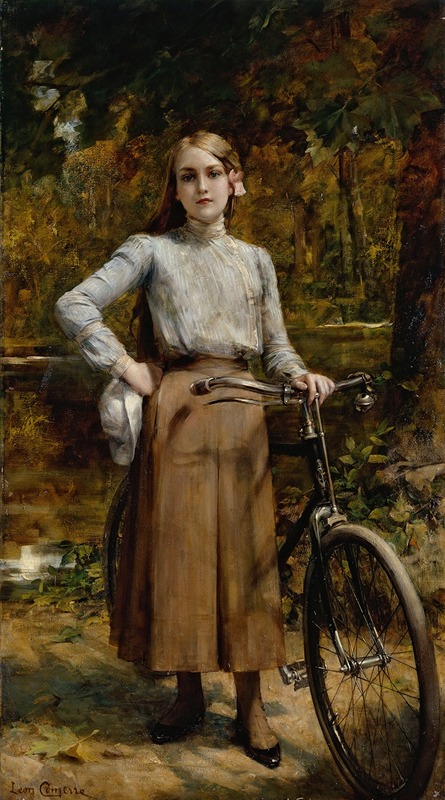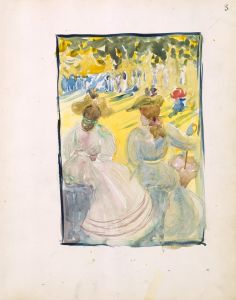
Bicyclette au Vésinet
A hand-painted replica of Léon François Comerre’s masterpiece Bicyclette au Vésinet, meticulously crafted by professional artists to capture the true essence of the original. Each piece is created with museum-quality canvas and rare mineral pigments, carefully painted by experienced artists with delicate brushstrokes and rich, layered colors to perfectly recreate the texture of the original artwork. Unlike machine-printed reproductions, this hand-painted version brings the painting to life, infused with the artist’s emotions and skill in every stroke. Whether for personal collection or home decoration, it instantly elevates the artistic atmosphere of any space.
Léon François Comerre was a French academic painter known for his portraits and genre scenes, often depicting women in exotic or historical costumes. One of his works, "Bicyclette au Vésinet," captures a scene that reflects the leisurely and idyllic lifestyle associated with the late 19th and early 20th centuries in France.
"Bicyclette au Vésinet" is a painting that showcases Comerre's skill in combining portraiture with landscape. The painting is set in Le Vésinet, a suburban area near Paris known for its picturesque parks and affluent residents. This location was a popular retreat for Parisians seeking respite from the bustling city life, and it provided a serene backdrop for Comerre's work.
The painting features a woman elegantly dressed, riding a bicycle, which was a symbol of modernity and freedom during that era. The bicycle, having become increasingly popular in the late 19th century, represented a new form of mobility and independence, especially for women. Comerre's inclusion of this element in the painting highlights the cultural shifts of the time, as society began to embrace new technologies and changing social norms.
Comerre's attention to detail is evident in the way he captures the textures of the woman's clothing and the lush greenery of the Vésinet landscape. The use of light and shadow in the painting adds depth and dimension, creating a sense of movement as the woman cycles through the scene. This dynamic composition is characteristic of Comerre's style, which often combines realism with a touch of romanticism.
The choice of Le Vésinet as the setting is significant, as it reflects the artist's connection to the area and its reputation as a haven for artists and intellectuals. During the late 19th century, Le Vésinet was known for its artistic community, attracting painters, writers, and musicians who were inspired by its natural beauty and tranquility. Comerre, like many of his contemporaries, found inspiration in this environment, which is evident in the serene and harmonious composition of "Bicyclette au Vésinet."
While specific details about the painting's creation and exhibition history are limited, "Bicyclette au Vésinet" remains an example of Comerre's ability to capture the essence of his time. The painting not only reflects the aesthetic preferences of the Belle Époque but also serves as a historical document, illustrating the societal changes and technological advancements of the period.
In summary, "Bicyclette au Vésinet" by Léon François Comerre is a notable work that encapsulates the spirit of its era through the depiction of a modern woman in a picturesque setting. The painting is a testament to Comerre's artistic talent and his ability to convey the cultural and social nuances of his time through his art.


















